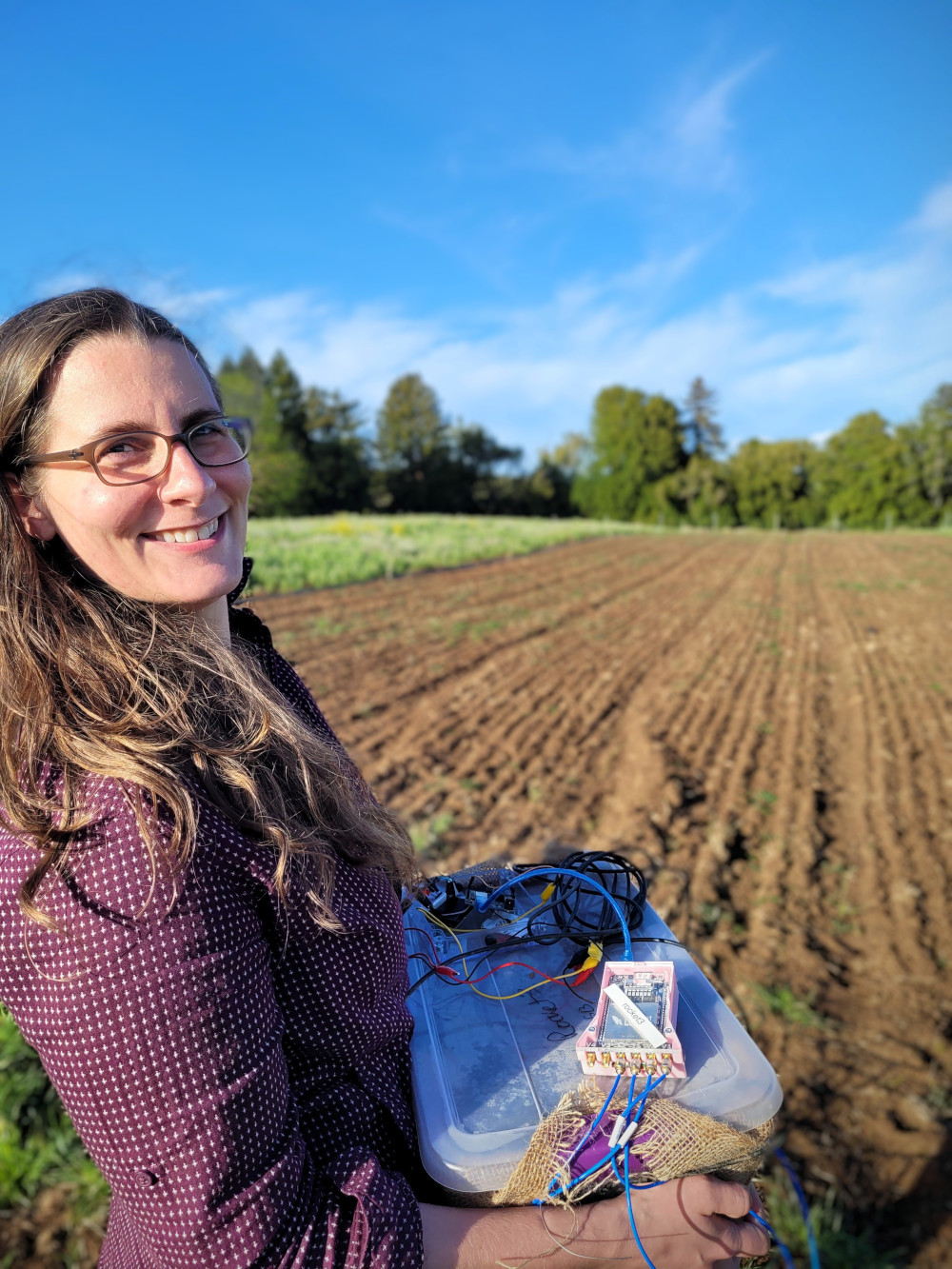Biopower plants

We all know about power generation from the sun and the wind, but it’s probably a surprise to learn that electricity can also come from the dirt beneath our feet. The dirt itself, however, is not the source—it’s the so-called exoelectrogens, mostly bacteria, that inhabit healthy soil all over the world. As they break down and metabolize—i.e., “eat”—complex molecules like sugars, these miniscule organisms release a steady trickle of electrons.
Commensurate with their microbial size, the electron output of a single bacterium is quite small. But their immense numbers and density in the soil can collectively produce enough of a spark for Assistant Professor Colleen Josephson and her collaborators to attempt to harness it. Josephson’s work aims to create what she calls “a mud battery,” more technically known as a microbial fuel cell (MFC). If she succeeds, MFCs will power soil moisture sensor networks on farms, potentially saving a lot of increasingly valuable water.
About 70% of all the potable water we use today goes to agriculture, said Josephson, noting that the sensor networks she envisions could improve the sustainability of farming by saving up to half of this water. And with another expected two billion people added to the world’s population over the next 30 years, “it’s going to be critical,” she said, “to use water more efficiently.”
—Bethany Augliere

